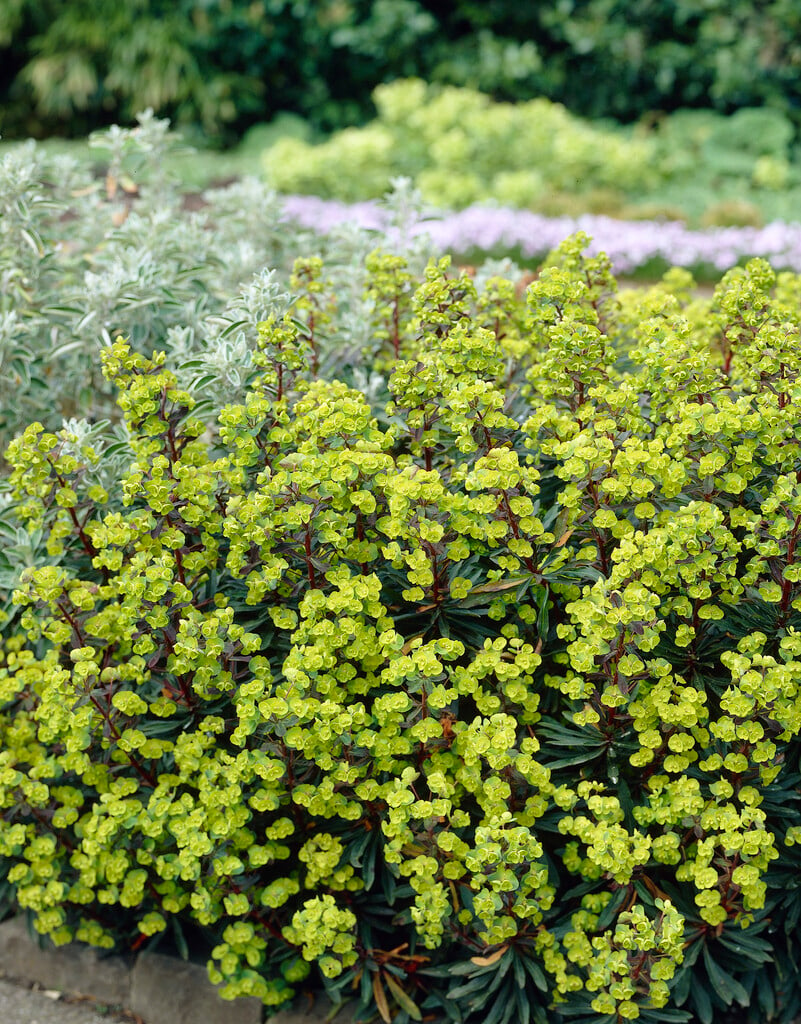Size
Ultimate height
0.1–0.5 metresTime to ultimate height
2–5 yearsUltimate spread
0.1–0.5 metresGrowing conditions
Moisture
Moist but well–drainedpH
Acid, Alkaline, NeutralColour & scent
| Stem | Flower | Foliage | Fruit | |
| Spring | Yellow | Green | ||
|---|---|---|---|---|
| Summer | Yellow | Green | ||
| Autumn | Green Red | Green | ||
| Winter | Green Red | Green Red |
Position
- Partial shade
Aspect
East–facing or North–facing
Exposure
Sheltered Hardiness
H6Botanical details
- Family
- Euphorbiaceae
- Native to GB / Ireland
- Yes
- Foliage
- Evergreen
- Habit
- Bushy
- Potentially harmful
- Humans/Pets: IRRITANT to skin/eye, harmful if eaten. Wear gloves and other protective equipment when handling. For further information and contact numbers regarding pets, see the HTA guide to potentially harmful plants
- Genus
Euphorbia can be annuals, perennials, shrubs or succulents, with milky sap and small flowers held within cupped, often colourful bracts
- Name status
Correct
How to grow
Cultivation
An easy-to-grow plant that will cope with most conditions even dry shade. It spreads by rhizomes and has the potential to become a nuisance if not managed well. See Euphorbia for further advice
Propagation
Divide in spring, basal cuttings in early summer, sow seeds.
Suggested planting locations and garden types
- Cottage and informal garden
- Wildlife gardens
- Low Maintenance
- Ground cover
Pruning
Remove stems imediatley after flowering to encourage new basal growth.
Pests
May be susceptible to aphids
Diseases
May be susceptible to botrytis (grey mould)
Love gardening
Sign up to receive regular gardening tips, inspiration, offers and more
View our Privacy Policy
Get involved
The Royal Horticultural Society is the UK’s leading gardening charity. We aim to enrich everyone’s life through plants, and make the UK a greener and more beautiful place.
